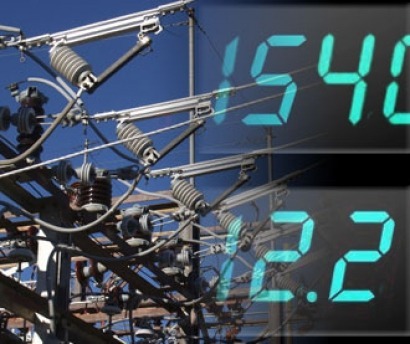
The structure of the electricity grid will change radically in coming years, experiencing a major increase in the share of energy from renewable sources and the number of electricity generators. In addition, energy from renewable sources – particularly wind and solar power – is subject to constant fluctuations.
"To integrate the large number of distributed energy generators into the power grid, balance out fluctuations and ensure stable supply, we need more information about the current condition of the power grid and the power generators and consumers connected to it", says Peter Pfisterer, head of TÜV SÜD's new smart grid laboratory. "While the IEC 61850 standard governs electrical grid data communication, there is still some need for action in the area of communication devices."
The IEC 61850 provides a communication standard for the bidirectional communication of data via Ethernet among power generators, power consumers and power distributors. "The standardized data models and nodes provide for the easy establishment of a well-functioning system", explains Peter Pfisterer. "This system permits both comprehensive data communication between the connected components and largely automated utility grid management."
Further advantages of a system based on the IEC 61850 standard include its modular structure and simple configuration via XML files. In addition, systems based on the IEC 61850 standard offer interfaces with the standardized IEC 60870-5-101 or 60870-5-104 telecontrol protocols, which will gradually be replaced by IEC 61850. Given this, existing systems can also be integrated into the future smart grid.
In the Munich-based smart grid testing laboratory, the TÜV SÜD experts perform comprehensive tests to ensure reliable functioning of the utility smart grid. "Applying our conformity and performance tests, we check whether the devices actually meet the requirements of the IEC 61850 standard", addes Pfisterer. "And our interoperability tests verify that the devices made by various manufacturers are actually able to communicate with each other."
Interoperability tests are important because the certificate of conformity with IEC 61850 is no proof that the devices made by various manufacturers are actually able to work together. In addition, the interoperability of systems based on edition 1, and the soon-to-be-published edition 2, of the IEC 61850 standard must be ensured. TÜV SÜD's proofs of conformity and interoperability offer electricity producers, consumers and grid operators important guidance for the selection of individual components and their integration into the utility smart grid.
The smart grid testing laboratory is the centrepiece of TÜV SÜD's Smart Grid Competence Centre, in which the international provider of test services bundles its global portfolio of smart grid services. The service portfolio covers laboratory testing of devices and systems, comprehensive consulting services on new developments, smart-grid integration of components and systems and smart-grid optimization as well as special training offers for electricity producers and consumers.
For additional information:

